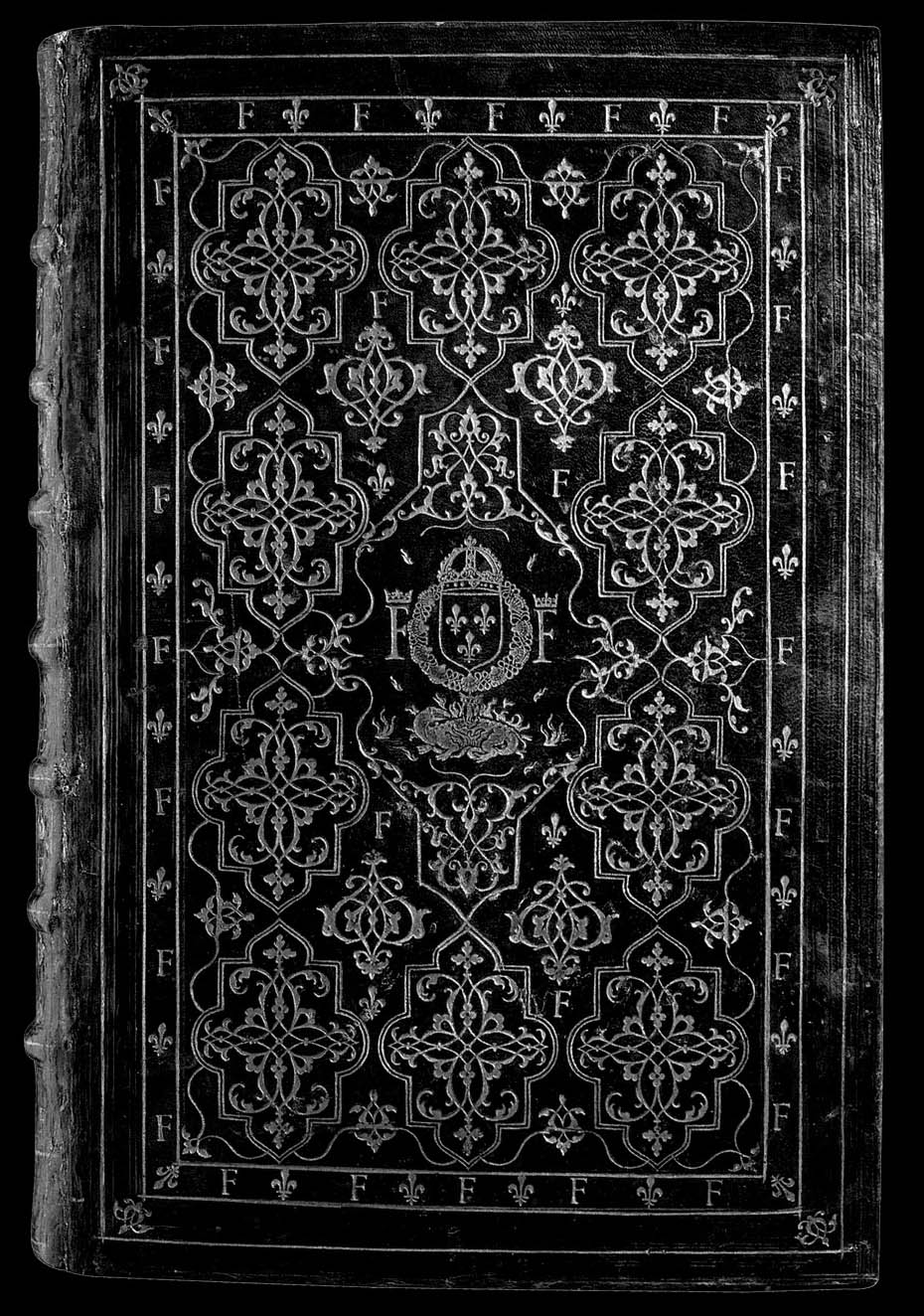

| A reproduction of the binding shown above can be found in La Reliure française depuis l'invention de l'imprimerie jusqu'à la fin XVIIIeme siècle by Marius Michel , 1880. |
| Nous donnons la reproduction d'un des plus beaux volumes de Fran¨ois Ier: la Bible de Robert Estienne, en latin. Les deux parties portent les chiffres, avec la salamandre et les armes. Absolument dans le style italien, l'ornementation est différente pour les deux volumes, qui sont d'un aspect superbe et d'une belle exécution. (Pl. I.) |
| This is probably one of the most famous bindings by Etienne Roffet, who became the first official Royal Binder, a post first created by Françoise Ier in 1539. This binding is thought to be one of the first French bindings to be fashioned with Maroquin leather, a fine grained skin that is much better adapted to gold tooled decoration. Thus this giant Bible would have been, I should think, stunning to behold, with an exceptional quality compared to anything one might have seen in the past. To make this binding, Roffet used three large plaques, only one of which had ever been used previously. |
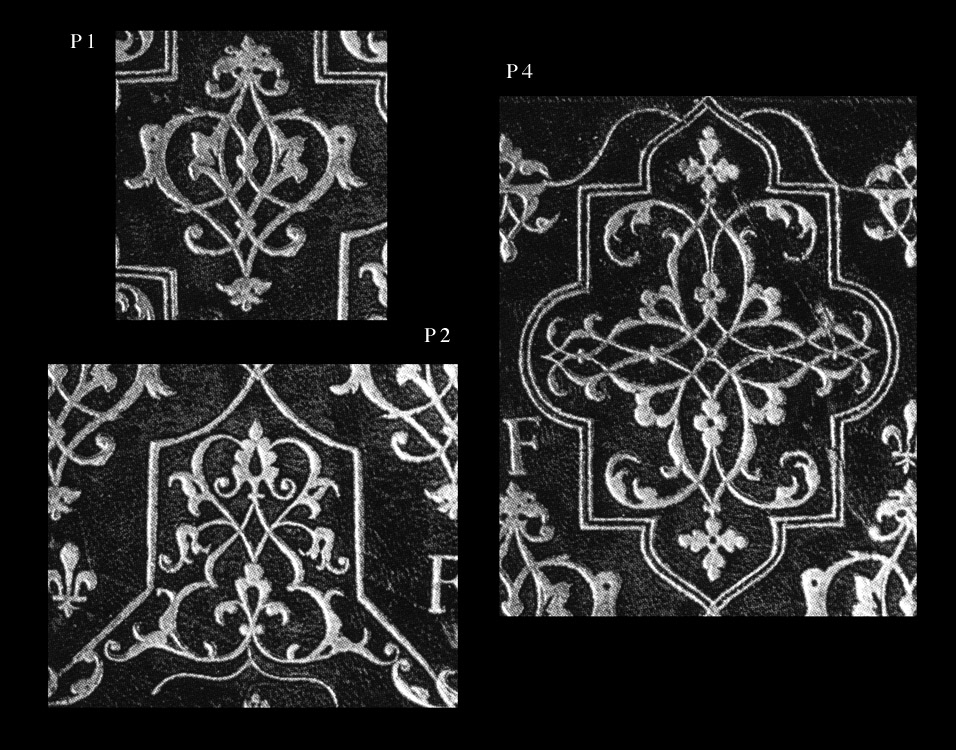
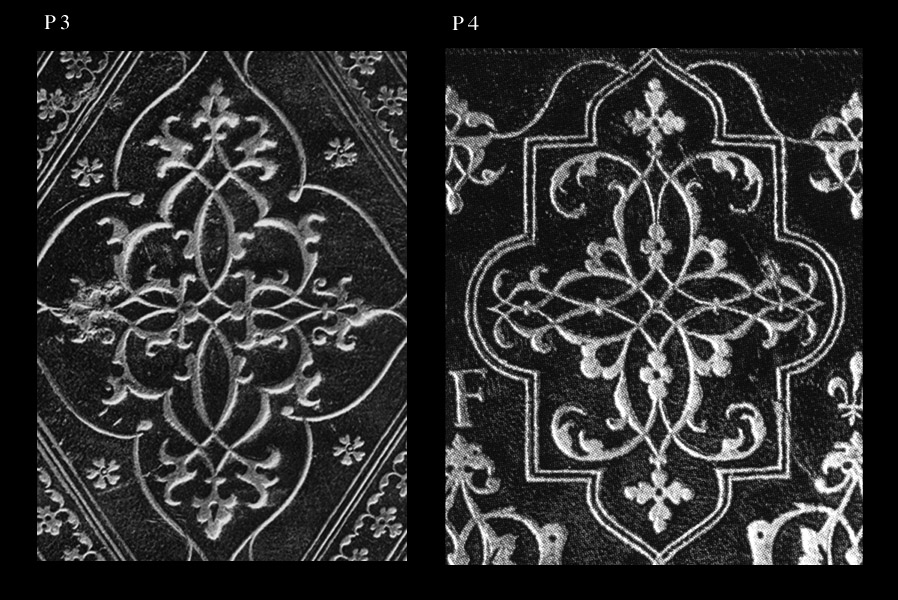
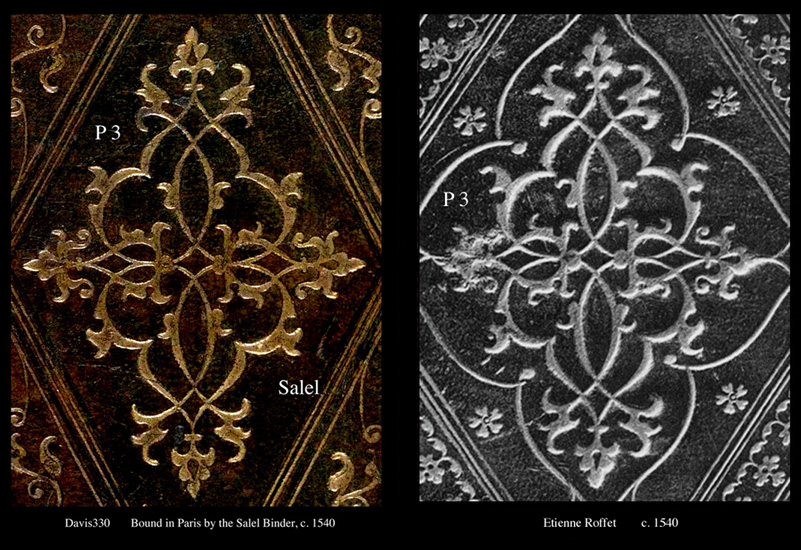
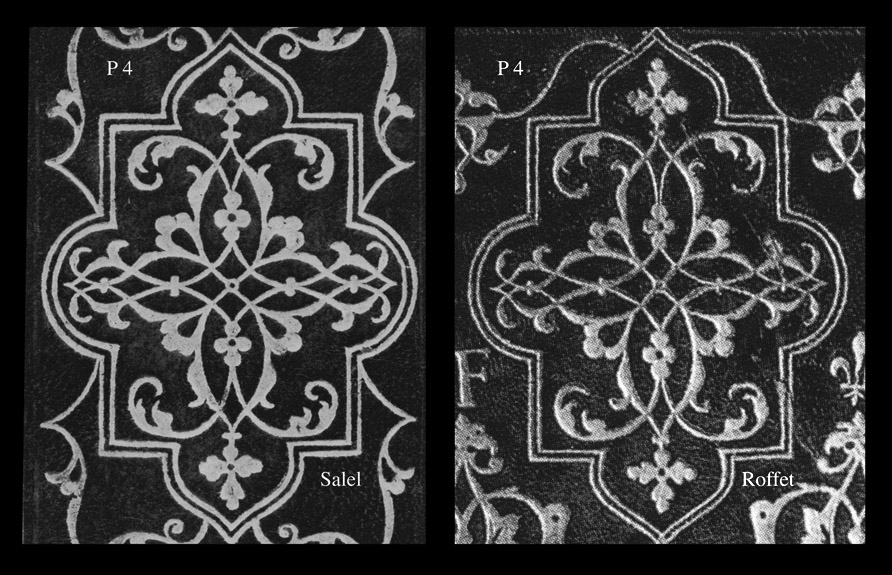
| We can see in Comparative Diagrams 3 and 4 that the Salel Binder was employing plaques nearly identical to those of Roffet. In Reliures Royales the authors present a Roffet binding (number 9, pp. 50) which they estimate was made around 1542-1543. We see it is decorated with the Roffet plaque 4 and thus is the work of Roffet, however instead of being decorated with his usual tools we see some new tools, some appear to be copies of the Salel Binder tools. While the authors note similarities to tools in the Esmerian binding No. 31 they make no comment on these new tools. I have often speculated that the fleurons that are found crowning the inner framework corners, serve as a sort of signature. Binders often using the same fleuron for this purpose for years, thus we can recognize instantly the identity of the binder. In this particular case of the Reliures Royales binding number 9, Roffet has used a tool that imitates the Salel tool used for this purpose. Thus at first sight (and without magnification) one would guess that this is a binding by the Salel Binder. |
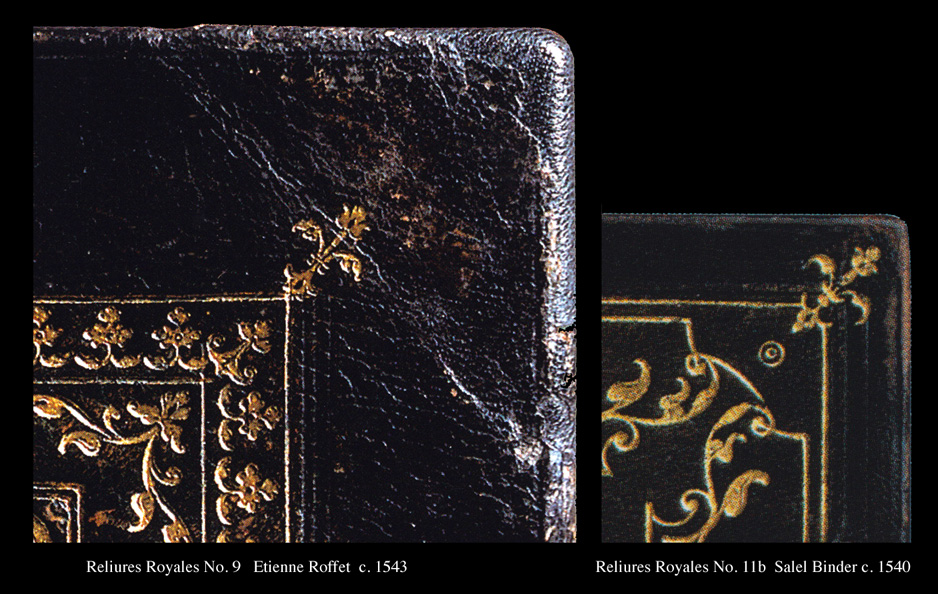
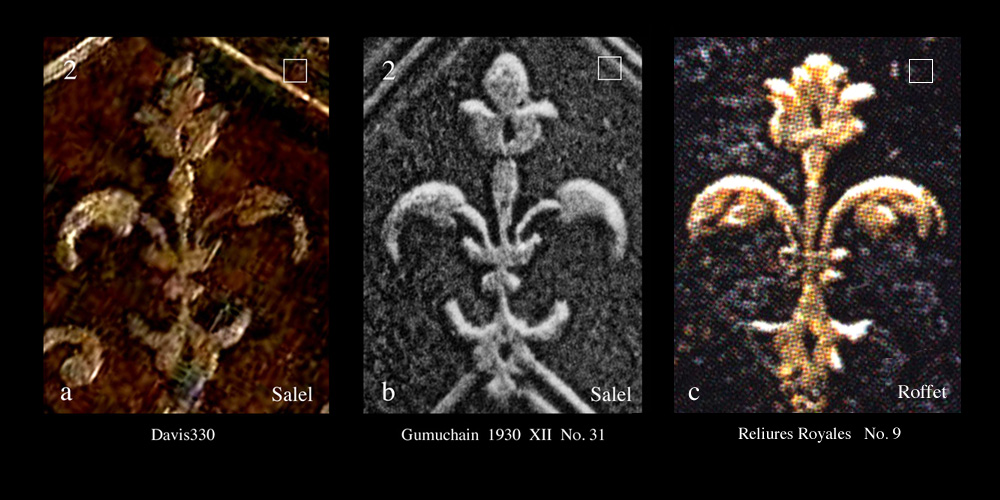
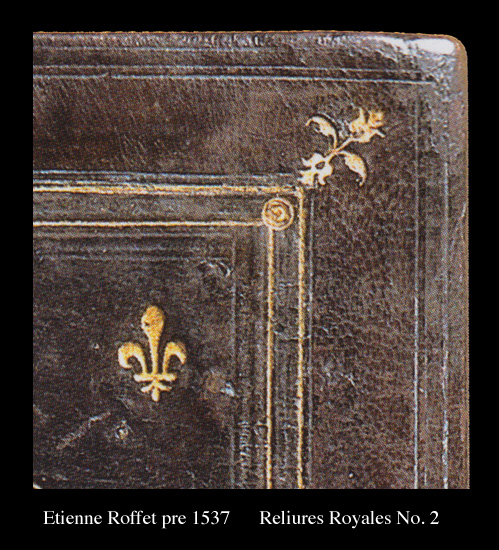
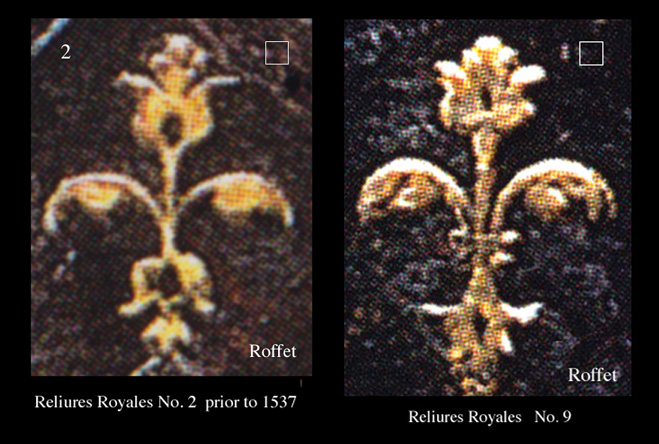
| In the diagrams above I want to point out that even though Roffet may have copied the Salel corner fleuron in 1543, he already had a similer corner fleuron before 1537, perhaps they copied his tool first. In any case, using corner fleurons as your identifying "mark" will only work as long as no one starts copying them. On the next page we will look a some classic corner tools by different binders of this period. |
| information about the author | return to the home page of VIRTUAL BOOKBINDING |